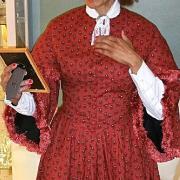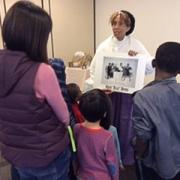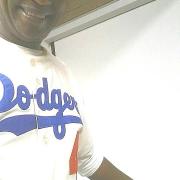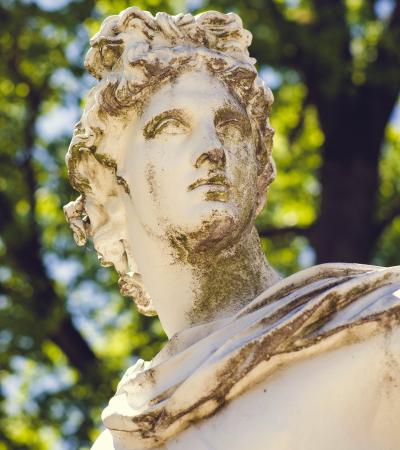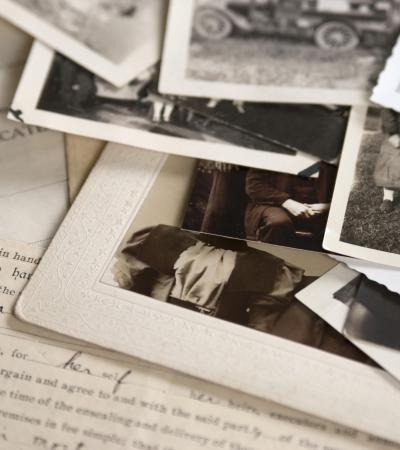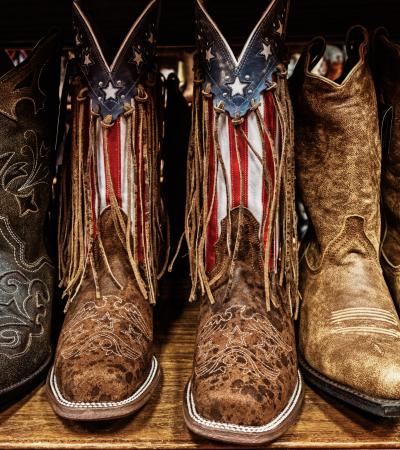History Comes Alive is a series of programs featuring dramatic portrayals of African American men and women who impacted not just Minnesota, but the entire nation. In these programs, historical figures come to life through performances by museum-trained actors, scripted storytelling and the use of props, artifacts, letters, publications, illustrations and maps. The series is offered in collaboration with the Minnesota African American Museum.
While the series is anchored by programs hosted during Black History Month in February 2016 and 2017, one goal of this collaboration is to highlight African American history throughout the year. To accomplish this, two programs will be held per quarter in 2016 and 2017 for a total of 16 programs.
Advanced Planning
Hennepin County Library staff met to discuss programming options with the director of the Minnesota African American Museum in July 2015. An internal Legacy Amendment funding proposal was submitted in September 2015, and programming began in February 2016.
Program goals were collaboratively developed with the Minnesota African American Museum. They include:
- Centering African American history in Minnesota and American history
- Valuing learning experiences that happens outside the classroom and beyond Black History Month
- Creating space for absent narratives
- Learning from communities, rather than about communities
Marketing
For marketing, each hosting library branch:
- Used a template to create posters and fliers to use in the library and distribute in the community. The brand image was developed jointly. (See the poster template under Attachments at right.)
- Shared programming information with local media outlets, free online event calendars and community contacts.
Additional external advertising included promoted Facebook posts, print ads and radio spots for fall 2016 and again for winter 2017.
Our data indicates that paid media raised awareness of the program but did not necessarily translate to increased attendance/participation. In-house publicity, personal invitations from staff and word of mouth were the most effective marketing techniques for 2016. We also found that there was more visibility in free media for the program that occurred during Black History Month in 2016.
Attendees at one program included students from an adult intermediate English class hosted in the library. These Somali-, Lao- and Spanish-speaking students appreciated the opportunity to increase their exposure to the English language through theater. They were especially impressed to learn about the creations and inventions of the program’s subject, Frederick McKinley Jones. Learning about Jones' accomplishments and culture sparked excitement in the students.
Budgeting
This program was made possible by funding from Minnesota's Arts & Cultural Heritage Fund through the Clean Water, Land and Legacy Amendment. In November 2008, Minnesota voters approved a state constitutional amendment to dedicate three-eighths of 1 percent of state sales tax revenue to four funds: Arts and Cultural Heritage; Clean Water; Outdoor Heritage; and Parks & Trails. Minnesota's 300-plus public libraries receive funding from the Arts & Cultural Heritage Fund, distributed by the state’s 12 regional library systems, to provide programs and services in four areas: arts (visual, performing and media), culture, literary history and Minnesota history.
Our total budget for the series was $10,222, which included:
- Contracted services (performer fees): $4,000
- Two programs per quarter in 2016 and 2017, for a total of 16 programs at $250, per program
- Personnel (estimate $25/staff hour): $1,200
- Four hours of sub time (per program) so staff can be present at approximately 16 programs
- Advertising/promotion: $4,000
- Local publication print ads, radio spots and some promoted Facebook posts
- Collection: $1,022
- Supplementary materials that support the program subjects
There were a few areas that could have been possible cost savers. For example, we found that:
- Funds to cover staff time were not needed at all locations
- Paid media raised awareness of the program, but in-house publicity and free media coverage with local newspapers, newsletters and event calendars were also effective
- Collection support was helpful but not required
Day-of-event Activity
Set-up on the day of the program is fairly simple. The presenter requires three long tables at the front of the room and auditorium style chairs/seating. One staff person greets the presenter, introduces the program and collects evaluations after the program. (See evaluation forms under Attachments at right.)
Program Execution
The program begins when an actor enters the performance area after the patrons are seated. The actor begins the program in character and remains in character throughout the performance until the Q&A session at the end. Performances highlight the lives and contributions of historical figures like:
- Emily Goodridge Grey, a social activist, pioneer and abolitionist
- Frederick McKinley Jones, an inventor of more than 60 inventions
- Jackie Robinson, the first African American to play in Major League Baseball
Attendance varied from as many as 70 people in one location to as few as five in another. This program truly appeals to a wide range of ages, from school-aged children to adults, which was reflected in attendance.
We received very positive feedback about this program. All of the patrons who completed program evaluation surveys indicated that they learned something new about African American history, as well as something new about the specific contributions of the person featured in the program. Comments often highlighted the unique program format and content; the connection to Minnesota history; and included a request for more of these programs. Some sample comments from our evaluations included:
- “It was great! Very dynamic, lots of new knowledge about all that Jackie did in his life.”
- “Excellent presenter. Quite engaging. So glad this opportunity was available.”
- “Thank you for having this presentation. Very good! Keep on keeping on."
For collecting this data, separate paper surveys were developed for adults and children attending the program. Surveys were designed to collect data to support the expected outcomes below:
- Outcome 1: Patrons will learn about specific contributions of African Americans in Minnesota, amplifying the voice of African American leaders.
- Outcome 2: Patrons will learn about Minnesota and African American history outside of the classroom experience and beyond Black History month.
- Outcome 3: Patrons from a diverse background will feel welcome in the library.
- Outcome 4: Patrons see their own cultural heritage and history reflected in library programming. Material presented will be relevant, increase knowledge and enhance cultural self-esteem.
We collected the survey results in Survey Monkey and shared them quarterly with funders, internal stakeholders and the Minnesota African American Museum.
Advice
Our advice is to find a partner. This program is dependent on our collaboration with the Minnesota African American Museum. The museum staff built and continue to support the programs that include museum-trained actors, related props, reproductions of artifacts and copies of primary documents (letters, publications, illustrations and maps).
Supporting Materials
- Feedback (Coming Soon!)
- Programming Librarian Facebook Group

